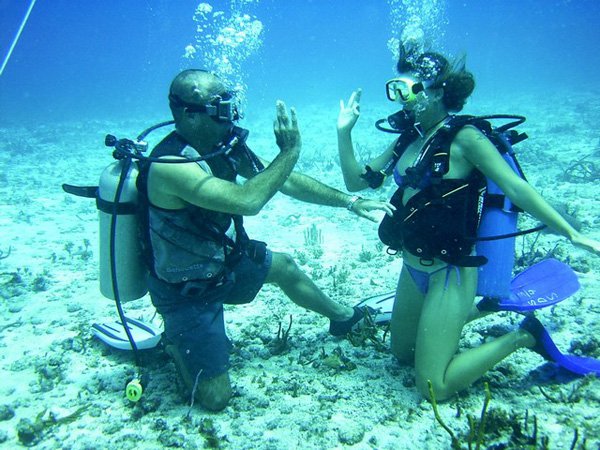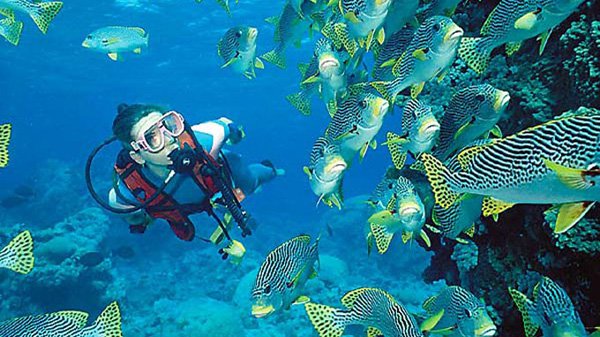Written on the rod blank or handle is a code number which indicates the line that the rod manufacturer suggests is best for most customers; i.e., 6 line. To most fly anglers, this means that they should use nothing but a 6 weight line with this rod. But to get the full potential from different fishing situations, you may want to consider using several line sizes on your rod ? perhaps varying as much as two line sizes from the one suggested on the rod.
Manufacturers know your rod may be used in a host of fishing situations, but they can't judge your casting style and fishing skills. So when they place a recommended line number on your rod, it is implied that it's for average fishing conditions. First, understand that you're not going to damage a fly rod using fly line a little lighter or heavier than is recommended. Certainly, at times, the rod will fish better if different line sizes are used.
Match line weight to conditions
Let me cite several examples of when you might want to use various line weights on the same rod for different fishing conditions you may encounter.
First, if you fish a swift, tumbling mountain brook, you can use a rather short leader with a dry fly. A leader of 7-1/2 feet in length would probably do the best job. But if you fish for trout with the same outfit and dry fly on a calm spring creek, beaver pond or quiet lake, that short leader could prevent you from catching many fish. While many fishermen automatically know that on calmer water they have to use longer leaders, many of them don't really probe any deeper into "why" they need a longer leader.
It isn't the leader's length that's so important. In calm water, what frightens the trout is the line falling to the surface. The longer the leader, the farther away from the fly is the splashdown of the line.
But with a longer leader, the more difficult it is to cast and there is a reduction in accuracy. Thus, a 9-foot leader is more accurate and easier to turn over than a 15-footer. Considering this, plus the fact that the splashdown of the line is what is frightening the trout, there is a simple solution. Use a fly line one size lighter than the rod manufacturer recommends. Jim Green, who has designed fly rods for years and is a superb angler, mentioned to me more than three decades ago that he almost always used a line one size lighter when fishing dry flies where the trout were spooky or the water was calm. I tried it and have routinely followed his advice. So, for example, if you are using a six weight rod, you can drop down to a five weight line with no problem. In fact, in very delicate fishing conditions, I often drop down two sizes in line weights. There is a reason.
Weight and speed need to vary. Fly rods are designed to cast a particular weight of line, with a good bit of line speed. If you drop down a line size, you benefit in two ways. One, the line is going to alight on the water softer than a heavier line. Two, because it is not as heavy, it doesn't develop as much line speed. A line traveling at high speed often comes to the water with a heavier impact than one that is moving slower. Even with a line two sizes lighter, you can still cast a dry fly or nymph far more distance than what is called for in delicate trout fishing situations. So you don't hamper yourself at all by using a line lighter than the rod suggests. Best of all, you can now use a shorter leader, since impact on the surface has been lessened.
There is a second situation where a lighter than normal line will help you if you are a fairly good caster. The wind is blowing and you need to reach out to a distant target. Many try to solve this common problem by using a line one size heavier. The usual thinking is that a heavier line allows them to throw more weight and, they hope, get more distance. Actually, going to a heavier line means that they complicate the problem.
On a cast, the line unrolls toward the target in a loop form. The larger the loop, the more energy is thrown in a direction that is not at the target. When fishermen overload a fly rod with a line heavier than the manufacturer calls for, they cause the rod to flex more deeply, which creates larger loops on longer casts. Overloading the rod wastes casting energy by not directing it at the target.
If you switch to a lighter line, you may not have enough weight outside the rod tip to cause the rod to load or flex properly ? if you hold the normal amount of line outside the rod during casting. But if you extend this lighter line about 10 feet or a little more outside the rod than you normally would for this cast under calm conditions, you can cast a greater distance into the wind. By extending the additional amount of lighter line outside the rod, you cause it to flex as if you were false casting the normal length of the recommended line size.
Since the rod is now flexing properly, it will deliver tight loops, but the lighter line is thinner. This means that there will be less air resistance encountered on the cast.
If you are forced to cast a longer distance into the wind, switch to one size lighter line and extend a little more line outside the rod tip than you normally would. This means, of course, that you need to be able to handle a longer line during false casting. But the line that is lighter than the rod calls for will let you cast farther into the breeze.
Explore the heavenly maritime life


Baseball Jersey has also become a Fashion Wear

Copyright © www.mycheapnfljerseys.com Outdoor sports All Rights Reserved